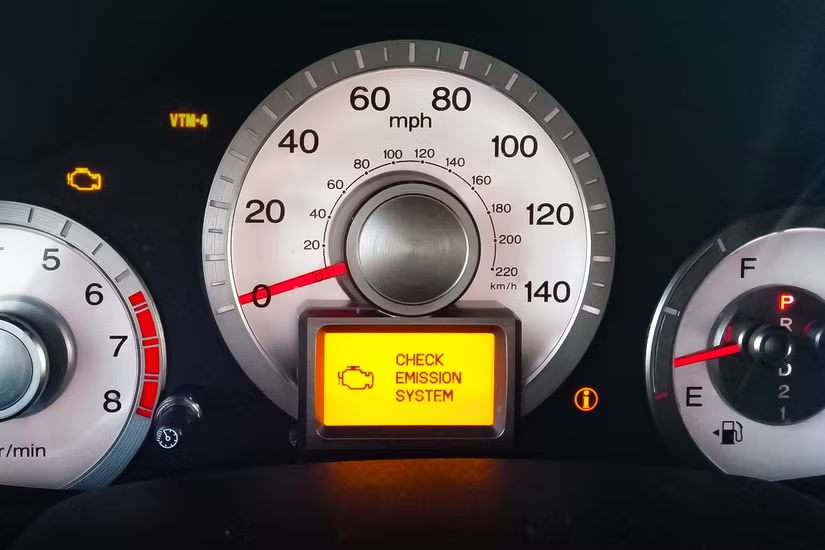Honda vehicles are known for their reliability and performance, however, like any complex machinery, they can experience issues from time to time, and one of these issues is the Honda emission system problem.
Any Honda model, such as Civics, Accords, CR-Vs, and CR-V XLs, may have experienced emission problems. Let’s explore Honda emissions system problems and see what we can do to solve them.
What Does Emissions System Problem Mean On Honda?

In a Honda vehicle, an “emissions system problem” refers to something wrong with the vehicle’s emission control system. In the same way as any other vehicle, Honda’s emissions system works to reduce the amount of harmful pollutants produced during combustion.
As part of a Honda’s emissions control system, a number of components work together to minimize pollutants like nitrogen oxides (NOx), carbon monoxide (CO), and hydrocarbons (HC). In addition to the oxygen sensors, catalytic converter, exhaust gas recirculation valve (EGR), EVAP system, and others, there are a number of other components involved in this process.
Honda’s onboard diagnostic system will illuminate the dashboard with the “emissions system problem” warning light when it detects a problem or a deviation from expected performance.
It means that the Honda emission system isn’t working properly when the “check emission system Honda” light appears on the dashboard. You should also have a quick diagnostic as soon as possible even if it is a simple problem like a loosened gas cap.
Emission System Problem Honda Causes
Honda’s emission control system may exhibit different symptoms depending on the specific issue affecting it. The following are some common signs to watch out for:
Unusual exhaust smoke
Pay attention to how the exhaust smoke looks and how it varies in color and consistency. Emission system problems can sometimes lead to thicker, darker, or unusually colored exhaust smoke. An excessive amount of white smoke, black smoke, or an odor in the exhaust system may indicate a problem.
Reduce fuel efficiency
It is also possible for Honda’s emission system to fail at the same time as its fuel efficiency to decrease. A malfunctioning emission system could cause your Honda to consume more fuel than usual or have to refuel more often.
Check engine light
Check engine light illumination with the message “check emission system” is the most noticeable sign of Honda emission system problems. As a warning, the check engine light illuminates when a problem is detected. A diagnostic trouble code (DTC) will identify the specific problem, but it does not provide details about the exact issue.
Failed emission test
You can fail an emissions test if your Honda has an emission system problem if you live in an area that requires periodic emissions testing. A vehicle’s emission control system may be malfunctioning if it fails an emissions test due to an increased level of pollutants emitted.
Read: B123 Honda Service
Read: Honda A123 Service
Read: Honda Odyssey Firing Order
How To Fix The Emission System Problem Honda?

When your Honda dashboard displays the error message “check emission system” or if any other symptoms appear, it’s time to diagnose or fix the emission system. What can you do to fix it?
In order to fully understand how the Honda emission system works, let’s find out what causes it:
- Faulty catalytic converter
- EGR system issues
- Fuel system problem
- Evaporative emission control (EVAP) system leaks
In the event that your Honda has an emissions system problem, you should address it as soon as possible. A failed emissions test or non-compliance with environmental regulations can result from ignoring or neglecting the issue.
Clear DTCs and test
DTCs can be cleared from the vehicle’s onboard diagnostic system after repairs or component replacements have been completed. Following the test, the emission system will be checked to ensure that it is working correctly. In order to ensure that the system is working correctly and that emissions are within acceptable levels, a road test may be conducted or specialized equipment may be used.
Retrieve diagnostic trouble codes (DTCs)
Onboard diagnostics detects problems when the check engine light illuminates. An emission system DTC can be retrieved with a diagnostic scanner first. In these codes, you can learn more about what is wrong with the component or system.
Check other parts of the emission system
Any visible damage or malfunction in the emission control system can be detected by inspecting the various components. In addition to oxygen sensors, catalytic converters, EGR valves, EVAP systems, and other parts, this may include checking the oxygen sensors and catalytic converters.
Is it Safe to Drive with an Emission System Problem?
The chances are that your vehicle is in its limp-home mode if it has an emission system problem but is functioning normally. This can negatively affect its performance and impair its handling.
A misfire will cause the system to protect the engine, but driving with a misfire can cause the oxygen sensors and catalysts to be damaged more extensively. So, it is best to consult a mechanic when you pull over.
Third-generation Honda Pilots also face problems when their injectors fail, which locks their transmission in third gear and illuminates their instrument cluster with warning lights. In order to avoid further damage and ensure safe driving, SAT Japan stresses the importance of addressing these issues immediately.
Read: Honda A127 Service
Read: Honda B13 Service
Read: Honda B14 Service
Read: Honda B17 Service
Conclusion
Please note that the information we provided about the emission problems may not apply to all Honda models or years. It is crucial to diagnose a specific Honda vehicle’s emission problem properly by a qualified technician. Please feel free to leave a comment below if you have any concerns!
